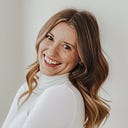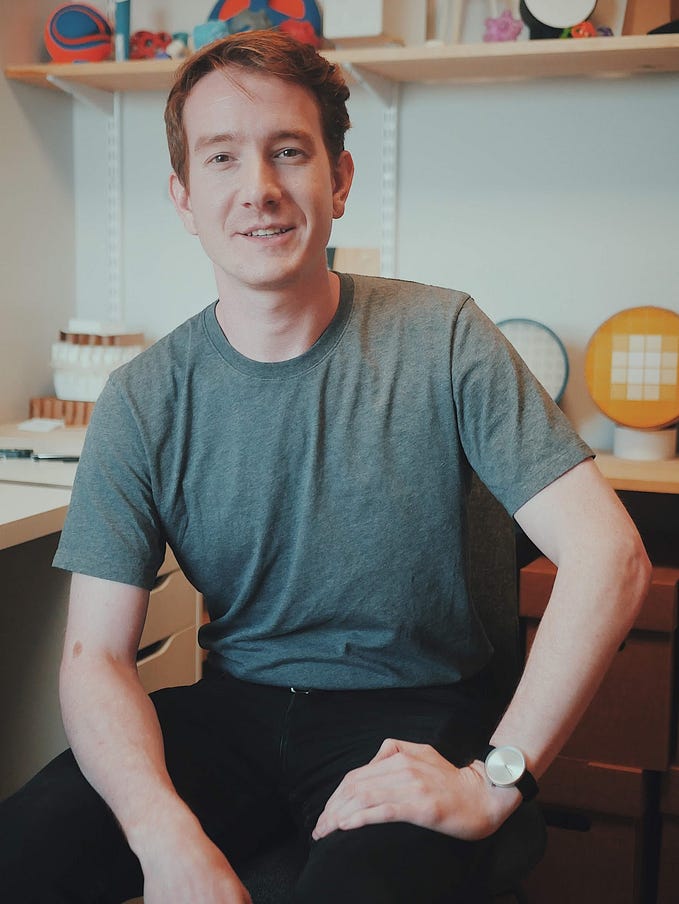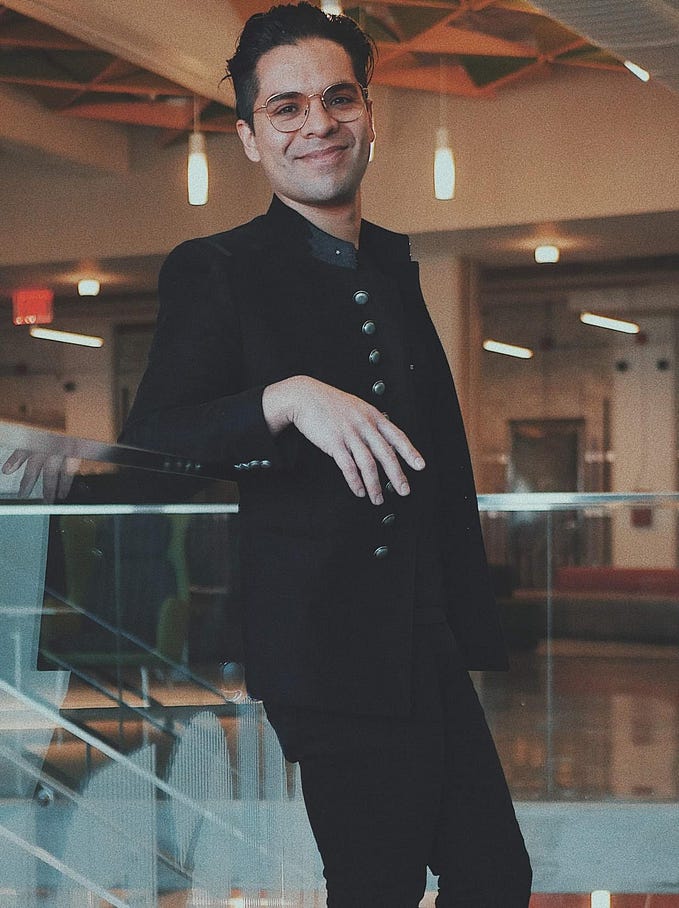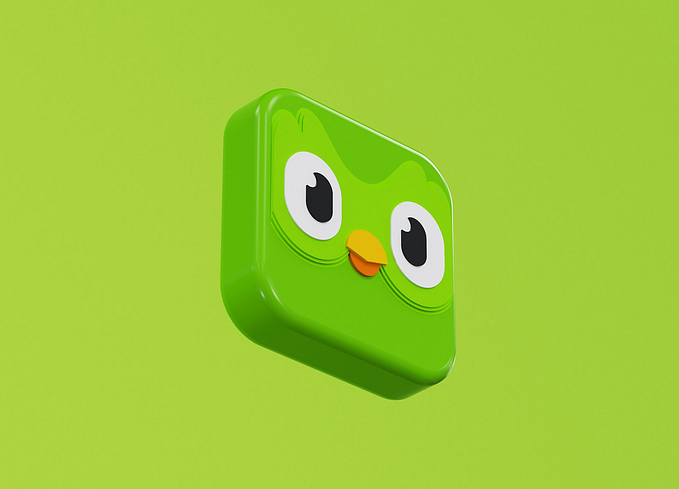Interview with Alice Chuang, Product Designer at Facebook Messenger
Alice is a Product Designer at Facebook Messenger; she was born and raised in Boston, Massachusetts and is culturally Taiwanese-American. Alice currently lives in San Francisco with her fiancé Ross, an iOS Engineer who now works at Apple on the App Store team. “We’ve worked at two startups together. You know if I’m marrying the guy, he definitely executes to spec. 😉”
You can follow Alice on Instagram or Twitter and see her work on her website.
If you have any questions relating to this interview or are interested in being interviewed, feel free to DM me on Instagram or reach out on LinkedIn.

Can you tell us about your education?
I have a double major in Film Studies and English Literature from Mount Holyoke. I never would have thought I’d end up at a Women’s College, but the experience was unparalleled. There’s something about an environment for young women where leadership in student organization is de facto only women — it’s empowering! I really think it set me up for life after college, especially tech, which is a field that’s still quite male-dominated.
What is your previous work experience?
My first software design job was through a Yale Science Park startup accelerator with two friends, where we learned some business tenets and worked on building our own company, which focused on creating political apps for grassroots campaigns.
After that, I joined a digital agency in Boston where I got to work on pretty much every app genre — sports, finances, music, smell-o-vision… With that I also got to experiment a lot with many visual styles, which taught me a lot.
I then moved down the street to Google, where I worked on Google Play for Education. It was the first company where I got to work really closely with researchers and get qualitative and quantitative data about how our users all over the world were using our products. That kind of information was extremely valuable, because the platform we were working on involved schools of all different sizes and resources, which meant that our product and content management solutions had to scale for both ends of the spectrum.
I eventually left Google to work with some of my friends at a health-tech startup in Boston called Wellframe, where I led product design. My team focused on building Wellframe’s live mobile and web dashboard products, which helped elderly patients who had been diagnosed with chronic diseases to better manage their condition and communicate with their caretakers more frequently than if they were depending on check-ups or hospital visits. On the other side of things, the caretakers could better monitor these at-risk patients and ensure things such as whether or not their patients were taking their medications as scheduled. They’d also be able to collect trends over time and have better insight to when a patient might be heading towards a bad situation, like a heart attack, and be able to respond and treat the condition before it becomes an ER situation.
It was also around this time that I got diagnosed with two autoimmune conditions, so it was particularly intense but also motivating for me to be working on something health-tech related and feeling the struggles of our healthcare system at the same time. On the flip side, I also saw the real difficulties of working on something innovative in healthcare — there’s a lot of red tape and legality involved. We were essentially competing with big, established companies like Epic.
Another challenge of working on Wellframe was designing a mobile interface for our main cohort of users, who were senior-aged. For me, this was an incredibly valuable experience, because at Google we’d been designing for children who were digital-natives, and at the agency, our apps were meant for people in my demographic — tech savvy, twenty-something, and with the latest mobile devices. I learned a lot from talking with our senior users. Overall, I’d say that working on Wellframe was essentially a long-term empathy exercise around inclusive design for me, which really helped me shift comfortably into my current role on Facebook Messenger, a product meant to scale globally, for all demographics.
I ended up moving to California and working at Facebook without really planning to. My fiancé, Ross, got a job offer from Apple. He’s an iOS Developer, so he was sort of like, “I gotta do this, this is my dream job….would you move out to California with me?”. Looking back, I was in such a privileged position to casually make a move like this, because we both worked in tech. Had I been a teacher or a real estate agent, or some other job that’s much more network dependent, I’d have had a far harder time picking up my life to move across the country.
A few months after Ross started at Apple (he’s an engineer on the App Store team), I flew out to interview at Apple and Facebook. I ended up getting the exact offer from both companies, so my decision ended up purely based on the product that I wanted to work on and the company’s culture. I grew up using AIM and have a deep love and appreciation for instant messaging, so the choice was simple — Messenger was and still is an ideal product for me to contribute to.

Do you have a fun fact about yourself you’d like to share?
I’m really into ligne-claire comics and tarot cards — I think they can be so aesthetically beautiful and expressive. Maybe one day I’ll combine both interests into one and make my own ligne-claire styled deck.
How did you get into UX design?
Most of my technical background prior to becoming a Product Designer stemmed from knowing how to use Adobe Photoshop really well, and that I owe to Theater.
I worked as a Sound Designer on a bunch of musicals and plays with a theater troupe in college, and right off the bat I noticed that the posters we used to market our shows didn’t reflect the quality of the productions — they were usually slapped together by a harried Producer, and lacked visual design polish in every aspect. I volunteered to take that work off the Producer’s hands, and got pretty good with Photoshop. Luckily for me, at the time UI design happened on Photoshop, so the learning curve when I started working in the field was relatively low for me technically, and I was able to focus my mental energy on understanding product strategy and honing my visual craft.
Do you have a design philosophy?
Remember that you’re not representative of all the people who use your product. Always seek out other voices, opinions, and points of view.
What does diversity mean to you?
Different ways of thinking and approaching the world, whether that stems from race, gender, sexuality, cultural backgrounds, or other factors.
What are your thoughts on Accessibility in design?
Accessibility a huge focus of my work on Messenger. I believe that understanding inclusive design is going to be mandatory in the future — especially in the wake of the recent Supreme Court ruling that guarantees people with a disability “full and equal enjoyment of the goods and services … of any place of public accommodations”, as stipulated in the Americans With Disabilities Act, both physically and digitally.
Outside of legality, you can’t really build an app that’s scalable to all users if a subset of the population really struggles to use it. This includes all sorts of disabilities, whether temporary, permanent, or situational, like trying to use your phone with one hand while carrying groceries in the other.
I think the challenge with inclusive design will be with features like Stories, which are inherently visual, and being able to transform it into an accessible medium for visually impaired users. That’s a frontier that we haven’t quite breached, but new solutions and processes are imminent. We’ve already come a long way with AI’s ability to label photos to make an app like Instagram much more accessible.
What are some tips for UX interviews?
Come prepared to talk about your work. When I interview people, it’s more about what you learned from a project and how you solved the objective of the product than walking through pixels.
What do you think makes a great designer?
Being a good listener is one of the most important skills. It allows you to learn from others, be a good partner, and be able to take in valuable feedback from people who use your product.
Also, make the most of your meetings. This past year, I really committed to taking detailed, hand-written notes during meetings to avoid being distracted by my laptop. Always remember to write down the date! It’s so helpful as a reference for later.
What does a typical workday look like for you?
It really depends on the day. My week is split up between offices. On Mondays and Fridays I work out of our San Francisco office, and those days tend to be light on meetings. I’m at FB HQ in Menlo Park on Tuesday’s and Thursdays, where many of the engineers I work with are based, so I tend to have most of my recurring meetings on those days so we can have face time and avoid the issues inherent to multi-person video conference calls.
Wednesday’s are “no-meeting” days for us, so I tend to do the most executional work on that day.
What are some of the challenges/obstacles you’ve faced at work?
My first year at Facebook was tough because I was learning so many new things (like how to design for Growth) while struggling to figure out my newly diagnosed autoimmune conditions. Being sick and in a new environment was really rough — I had to set up relationships with all new doctors and specialists, and try a bunch of different remedies to keep my autoimmune illness at bay. For a few months that first year, I couldn’t see out of one of my eyes, which was obviously challenging as a software designer. It’s hard to do work you’re really proud of when you feel physically terrible — at least half of your mental energy is depleted.
How do you see UX evolving in the future?
Prototyping is a skill designers will need in their toolbox, not as a “nice-to-have” but as something you really need to know how to do. It just saves so much time and makes it easier to show and explain your work.
Interaction design is also such a large factor in how an app feels to people who use it. You can even tell the difference between devices — just how tactile something feels and how much tension / give there is when you scroll or long-press and move elements around.
What are the most common mistakes you see in UX portfolios?
I think most UX designers are aware that they can’t just show a flashy prototype or set of mockups to showcase their product. People usually include their process now, and show how they start from objectives and user stories into wireframes and low-fidelity mockups, and eventually evolve those into their final high-fidelity mockups. However, showing your process isn’t enough. I’m much more interested in how you came to the conclusions in your final mocks, what didn’t work, and what you were able to learn from that. All of that = Product Thinking.
Do you have any tips for anyone looking to get into the UX field?
Be kind — it’s a smaller design world than you think it is! If you reach out to established designers asking for feedback or advice, don’t ghost on them. It’s rude.
I’d also keep practicing and honing your craft and eye for details. Unpack popular products that you admire and find the rhyme and reason in the interface. Try all kinds of apps and learn something from each one.
Do you have any side projects you’re working on?
I work on a podcast called The Penumbra Podcast. It’s something that I work on with a few of my friends from college and high school. It’s a queer radio drama with two main storylines. One is a sci-fi / noir centered around a depressed, bisexual private-eye on Mars. The other is set in a medieval world sort of post-King Arthur, where things are crumbling apart and beasts roam the ruins. We’re in our third season; definitely check us out!
What do you do to improve your design skills?
I like to try out all kinds of apps when looking for a specific solution.








